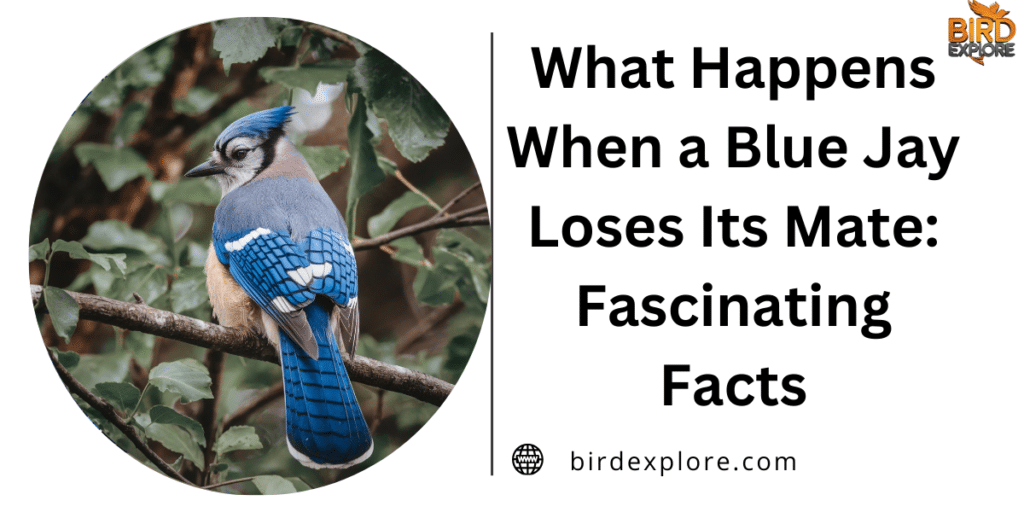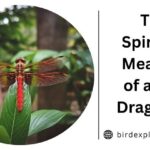Blue jays, known for their striking blue feathers and bold personalities, are a beloved sight in North American backyards. These intelligent bird species display fascinating behaviors and strong social bonds, especially during their mating habits. However, what happens when a blue jay experiences mate loss? This article explores the emotional lives of blue jays, the grieving process they undergo, and the behavioral changes that follow. Let’s dive into the complexities of their world.
Understanding Blue Jays

Physical Characteristics
Blue jays are easily recognizable thanks to their vivid blue and white plumage. Adult blue jays typically measure between 9 to 12 inches in length, with a wingspan of about 13 to 17 inches. They exhibit a crest on their head that can be raised or lowered, signaling their mood. This adaptability in appearance plays a role in their social interactions, making it easier for them to communicate with other birds.
Habitat and Distribution
These North American birds thrive in a variety of habitats, including:
- Deciduous forests
- Suburban areas
- Parks and gardens
Blue jays prefer areas with plenty of trees for nesting and foraging. Their adaptability allows them to thrive even in urban environments, where they often become a common sight.
Mating Habits of Blue Jays

Courtship and Pairing
Blue jays are typically monogamous, forming strong pair bonds that can last for several breeding seasons. Their courtship displays include:
- Vocalizations: Males often sing a series of calls to attract females.
- Physical displays: They engage in fluttering flights and mutual preening, strengthening their bond.
During this stage, blue jays establish a connection that will support their nesting behavior.

Nesting and Raising Young
Once paired, blue jays demonstrate impressive parenting skills. They build nests high in trees, often using twigs, leaves, and mud. The female usually lays 2 to 7 eggs, which both parents incubate for about 16 to 18 days. After hatching, they take turns feeding their chicks with a diet rich in insects and seeds.
Table: Blue Jay Nesting and Raising Facts
| Aspect | Detail |
| Nest Height | 5 to 10 feet above ground |
| Egg Count | 2 to 7 eggs |
| Incubation Period | 16 to 18 days |
| Fledgling Period | 17 to 21 days |
Behavioral Changes After Mate Loss
When a blue jay loses its mate, it experiences significant behavioral changes that impact its daily life.
Decreased Vocalization
A grieving bird often exhibits vocal changes. Blue jays are typically noisy, but after a mate loss, they may become unusually quiet. This silence indicates a shift in their emotional state.
Reduced Activity
Following the loss, many blue jays show a noticeable activity decline. They may forage less and spend more time perched alone, reflecting their subdued state. This change in behavior can affect their overall health and survival.

Withdrawal
Social dynamics shift dramatically. Blue jays often engage in social withdrawal, becoming isolated from their flock. This solitary behavior highlights the emotional impact of losing a partner, as they may not seek out social interactions like they did before.
The Grieving Process in Blue Jays
Searching Behavior
One notable aspect of the grieving process in blue jays is their searching behavior. They may spend hours looking for their lost mate, often returning to familiar spots where they used to forage or roost together.
Denial
During the denial phase, a blue jay may exhibit signs of confusion or disorientation. They might call out as if expecting a response, indicating a reluctance to accept the reality of their loss.

Acceptance
Eventually, blue jays may reach a stage of acceptance, where they start to engage with their environment again. This stage is crucial for their emotional recovery and survival, as it allows them to begin the adjustment process.
Emotional Lives of Blue Jays

Intelligence and Social Behaviors
Blue jays are known for their intelligence and behavior, displaying remarkable problem-solving skills and complex social interactions. They can remember human faces, differentiate between friends and threats, and even mimic the calls of other bird species.
Signs of Affection Between Mates
The bond dynamics between blue jay pairs are evident through various affectionate behaviors, such as:
- Mutual preening
- Sharing food
- Playful interactions
These actions not only reinforce their connection but also contribute to their emotional stability.
Impact of Losing a Mate

Behavioral Changes
After experiencing partner loss, blue jays undergo profound behavioral changes. The initial phase of mourning often leads to a reduction in vocalizations and a shift towards more solitary behaviors.
Emotional Responses
The emotional responses of blue jays to mate loss are complex. Studies suggest that these birds can experience a range of feelings, from sadness to anxiety, which can manifest in their behavior.
Survival After the Loss

Adaptation Strategies
Despite the emotional turmoil following mate loss, blue jays are resilient. They employ various survival strategies to cope with their new reality, including:
- Environmental adaptation: They may change their foraging patterns or nesting sites.
- Social recovery: Some blue jays begin to interact with other birds, slowly reintegrating into social groups.
- Finding new partners: Over time, many blue jays seek out new mates, although this process can take time.
Finding a New Mate
The journey to find a new mate can be challenging. Factors influencing this process include:
- Age: Older blue jays might take longer to bond with new partners.
- Environmental factors: Availability of resources can impact the success of finding a new mate.
Scientific Studies on Blue Jay Grief

Observational Evidence
Research findings highlight the profound emotional lives of blue jays. Studies have documented behaviors indicative of mourning, such as increased solitary behavior and decreased social interactions.
Expert Opinions
Ornithologists have shared insights into the grieving process of blue jays, emphasizing the significance of pair bonding in their emotional development. According to Dr. Jane Goodwin, an expert in avian behavior, “Blue jays showcase a remarkable capacity for emotions, and their response to mate loss reflects a deep emotional bond that is integral to their social structure.”
Case Study: Blue Jay Grief
In a notable case study, researchers observed a blue jay pair in a suburban area. After one partner passed away, the surviving jay exhibited prolonged searching behavior and reduced interaction with other birds for several weeks. This observation highlights the depth of emotional responses in blue jays.
Conclusion
Understanding what happens when a blue jay loses its mate offers valuable insights into the emotional lives of these remarkable birds. Their grieving process, marked by behavioral changes and emotional responses, underscores the complexities of avian relationships. As we learn more about blue jays and their experiences, we can appreciate the depth of their feelings and the importance of social bonds in the animal kingdom.
By recognizing the challenges blue jays face after mate loss, we can foster a deeper appreciation for their resilience and intelligence. So, the next time you spot a blue jay in your backyard, take a moment to consider the rich emotional world it inhabits.

Kay Lovely is a dedicated writer for Bird Explore, where she brings the latest celebrity news and net worth updates to life. With a passion for pop culture and a keen eye for detail, Kay delivers engaging and insightful content that keeps readers informed about their favorite stars. Her extensive knowledge of the entertainment industry and commitment to accuracy make her a trusted voice in celebrity journalism.







